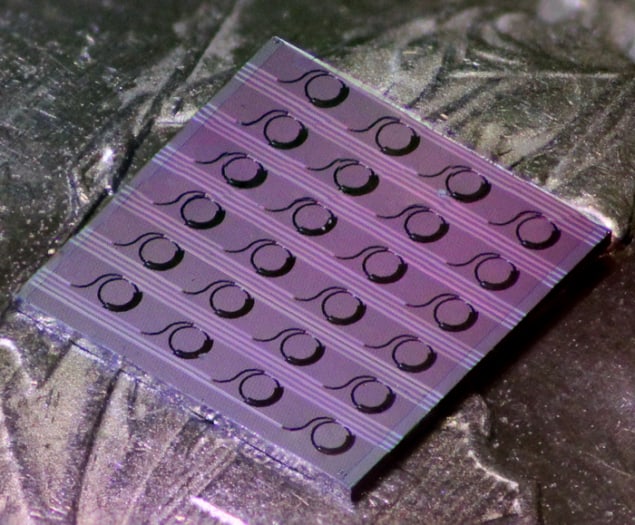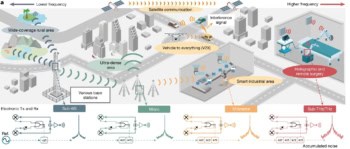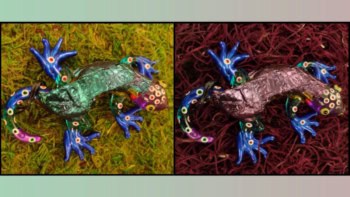
A new type of ultrafast tuneable laser based on low-loss lithium niobate integrated photonics could find application in technologies such as continuous-wave light detection and ranging (LiDAR) systems. The device, made by researchers at the Swiss Federal Institute of Technology Lausanne (EPFL) and IBM Research Europe in Zurich, has a high frequency-tuning rate and outperforms previous such lasers in terms of the laser linewidth.
Current programmable photonic integrated circuits (PICs) can be volatile and suffer from high optical signal losses – both of which prevent them from maintaining their programmed state. The excellent optical and electro-optical properties of lithium niobate, which is often employed in optical modulators (devices that control the frequency or intensity of transmitted light) offer a possible way around this problem.
Lithium niobate has recently emerged as an attractive substrate material for PICs, and it shows promise for making circuits with lower optical losses (a laser light beam can propagate through them without losing as much power). The material can also support high optical power levels and has a high “Pockels coefficient”, which means that its optical properties can be tuned using an electric field.
Hybrid laser diode chip
In their new study, detailed in Nature, the researchers, led by EPFL’s Tobias Kippenberg, assembled a hybrid device by integrating a distributed feedback laser and a silicon nitride–lithium niobate (Si3N4–LiNbO3) photonic integrated chip. The latter consists of a thin layer of lithium niobate placed atop silicon nitride waveguides. While it sounds simple, this assembly took the researchers years to master since it involved perfect bonding of a 4-inch-wide LiNbO3 wafer onto a Damascene Si3N4 wafer of the same diameter.
“This configuration allows these circuits, which have ultralow losses, to be tuned electro-optically,” explains team member Viacheslav Snigirev. It also facilitates injection locking of the laser diode to an optical microresonator – a technique that enhances laser operation at a certain frequency by using narrowband backreflection from a high quality factor optical microresonator. This makes both laser linewidth narrowing and frequency tuning possible.
“These features of the laser make it a favourable candidate for frequency modulated continuous wave (FMCW) LiDAR systems,” he tells Physics World.
Proof-of-concept FMCW LiDAR system
Using transmission and reflection measurements, the researchers found that their Si3N4–LiNbO3 chip has low optical propagation losses of 8.5 dB/m, which allows for an intrinsic laser linewidth of just 3 kHz by self-injection locking to a laser diode. Thanks to the intrinsic electro-optical properties of lithium niobate, the device also has an electro-optical laser frequency tuning speed as high as 12 x 1015 Hz/s, while retaining a narrow linewidth and high tuning linearity. These values are better than seen in previous such devices, allowing the researchers to make a proof-of-concept FMCW LiDAR system that boasts a spatial resolution of 15 cm.

Lithium niobate makes ultra-high-Q resonators
Kippenberg and colleagues say they are now studying more complicated photonic architectures for the feedback chip circuitry. These should further broaden the tuning span of the laser and increase its output power without compromising its bandwidth.
“We are also working on improving the fabrication of these circuits by modifying the processing sequence and the waveguide geometry to achieve better microresonator quality factors and frequency tuning efficiency,” says Snigirev. “Finally, we are eager to expand the spectrum of applications for our novel platform – for high-speed modulators and microwaves-to-optics interfaces.”



